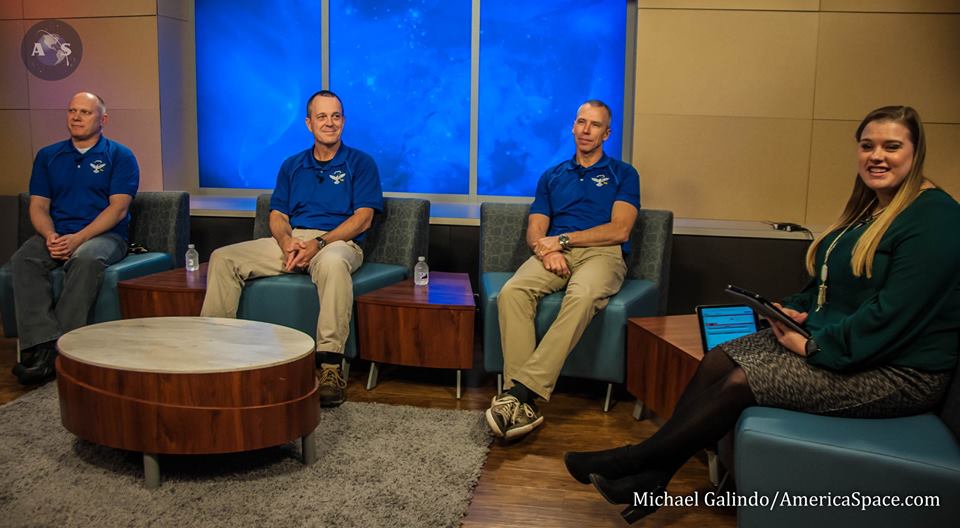
Three experienced spacefarers, including an ex-teacher, a former soldier in the Soviet Army and a veteran “Hubble Hugger”, gathered before the media at the Johnson Space Center (JSC) in Houston, Texas, on Thursday, 7 December, to discuss their upcoming voyage to the International Space Station (ISS). Two-time shuttle astronaut Drew Feustel, seasoned spacewalker Ricky Arnold and Russian cosmonaut Oleg Artemyev are slated to launch out of Baikonur Cosmodrome in Kazakhstan aboard the Soyuz MS-08 spacecraft early next spring and return to Earth in late summer.
The composition of ISS-bound crews has changed significantly over the course of the last year, following Russia’s decision to cut its number of cosmonauts aboard the station from three to two, in part due to ongoing problems getting its long-delayed Nauka (“Science”) module ready for flight. The original Soyuz MS-08 crew line-up was expected to feature “rookie” cosmonaut Sergei Prokopiev in the Commander’s seat, with veteran spacefarer Oleg Artemyev seated to his left as Flight Engineer-1 and seasoned NASA astronaut Drew Feustel in the right-side seat as Flight Engineer-2.
With the decision to reduce Russia’s ISS crew, Prokopiev was dropped from Soyuz MS-08 and Artemyev assumed command, with Feustel advanced into the systems-intensive Flight Engineer-1 role. NASA formally announced Feustel’s assignment in January 2017. However, planning was already at an advanced level to assign other U.S. astronauts to fill the empty right-side Flight Engineer-2 seat, with Ricky Arnold named in March 2017 to join Artemyev and Feustel on Soyuz MS-08.
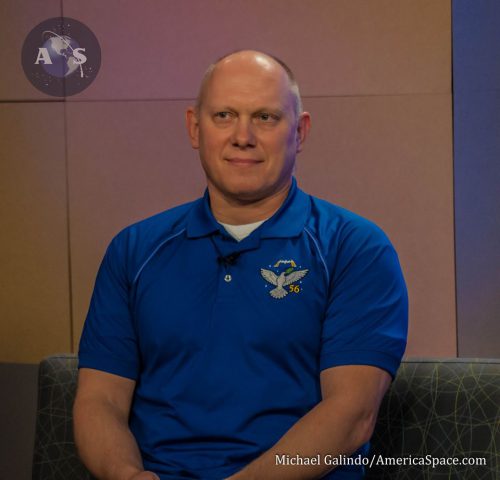
On launch day, Artemyev will assume the center command seat aboard the spacecraft. Born on 28 December 1970 in Riga—then part of the Soviet Union, but today the capital of independent Latvia—his upbringing was multi-faceted. He studied at Tallinn Polytechnical School, graduating in 1990, then served with the Soviet Army in Vilnius, the capital of today’s independent Lithuania. Artemyev then began working with the Energia corporation and in 1998 graduated from Bauman Moscow State Technical University, with a degree in low temperature technology and physics. He was selected as a cosmonaut in May 2003 and participated in the 15-day (November 2007) and 105-day (July 2009) precursor missions for the Mars-500 program. Artemyev later served on the backup crew for Soyuz TMA-10M, before launching on his first mission aboard Soyuz TMA-12M in March 2014. During 169 days in orbit, Artemyev performed two sessions of Extravehicular Activity (EVA), totaling 12 hours and 34 minutes. He returned to Earth in September 2014.
At Artemyev’s left shoulder will be Dr. Drew Feustel, a veteran of six spacewalks, three in support of ISS construction and maintenance and a further three to service and upgrade the Hubble Space Telescope (HST). Born in Lancaster, Penn., on 25 August 1965, he received much of his schooling in Michigan and earned an associate’s degree from Oakland Community College, working part-time as an auto-mechanic. He entered Purdue University and graduated with a degree in solid earth sciences in 1989 and a master’s in geophysics in 1991. Feustel then moved to Ontario, Canada, to pursue a PhD in geological sciences at Queen’s University. Having submitted a thesis investigating seismic-wave attenuation in underground mines and measurement techniques and applications to site characterization, he gained his doctorate in 1995.
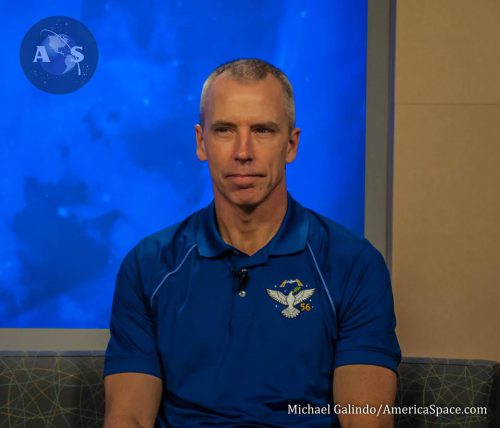
Feustel worked as a professional geophysicist, installing and operating microseismic monitoring equipment in underground mines, and later for the Exxon Mobil Exploration Company, before being selected by NASA as an astronaut candidate in July 2000. Assigned to his first space mission—the STS-125 visit to Hubble—in October 2006, Feustel trained for almost three years and in May 2009 performed three complex spacewalks to install new instruments and repair old ones, in what was expected to be the final time that human eyes will see the iconic space telescope up close and personal. Two years later, in May 2009, Feustel led three EVAs outside the space station during STS-134, the final voyage of shuttle Endeavour, which saw the installation of the Alpha Magnetic Spectrometer. All told, he has spent more than 28 days in space and accrued over 42 hours of spacewalking.
A self-confessed Formula 1 fan, Feustel spoke candidly to AmericaSpace’s Michael Galindo about the close analogy between flying in space and performing in motorsports. He drew attention to the public view of a racer heading for the finishing line. “But to see the whole world that exists behind that is like seeing everything behind the scenes at NASA,” he said. “There’s an army of people working to put someone in a rocket to ride into space. All the things that happen behind the scenes [are] fascinating. It’s the same in the racing world, to see what they go through to put someone in a car, to race around a track.”
In the right-hand seat aboard Soyuz MS-08 is Ricky Arnold, a former high school math and science teacher, who was selected as one of three “Educator-Astronauts” by NASA back in May 2004. Arnold hails from Cheverly, Md., where he was born on 26 November 1963. He earned a degree in accounting from Frostburg State University in 1985 and entered the U.S. Navy as an oceanographic technician, before completing his teacher certification program and joining the staff as a science educator at John Hanson Middle School in Waldorf, Md. Whilst there, Arnold completed a master’s degree in marine, estuarine and environmental science at the University of Maryland, graduating in 1992.
Subsequent teaching positions carried him to Casablanca, Morocco, teaching biology and marine environmental science, and he later served as department chair at the American International School in Riyadh, Saudi Arabia. Prior to his selection by NASA, Arnold also taught math and science in West Papua, Indonesia, and in Bucharest, Romania. Selected for astronaut training in May 2004, he qualified two years later and has served aboard the Aquarius undersea habitat. In the fall of 2007, Arnold was assigned to STS-119, a shuttle mission which would deliver the final set of power-producing solar arrays to the ISS. In March 2009, he spent almost 13 days in space and logged over 12 hours of spacewalking in two EVAs. Since his return from STS-119, he has served as assistant to the Chief of the Astronaut Office for EVA and Robotics and led a multi-national crew in a six-day European Space Agency (ESA) expedition to map and explore a large cave network in Sardinia.
“The training flow for this will be shorter than my training flow for shuttle,” Arnold told AmericaSpace’s Michael Galindo of the highly constrained regimen to get him into space in March 2018. He praised the teamwork in the United States, Russia and the International Partners for giving him the training that he needs, “and not try to bury me”. That said, when he was named to the crew in March 2017, he was put through many months’ worth of academics work in just four weeks. In some cases, he began Soyuz simulator sessions, before he had even completed the classroom work. On one particular day, Arnold and his crewmates were looking at the Soyuz environmental control systems, prompting him to wish that he knew more beforehand. At the same time, his previous work as a Capcom in Mission Control and in the simulator had prepared him well for the shortened training flow.
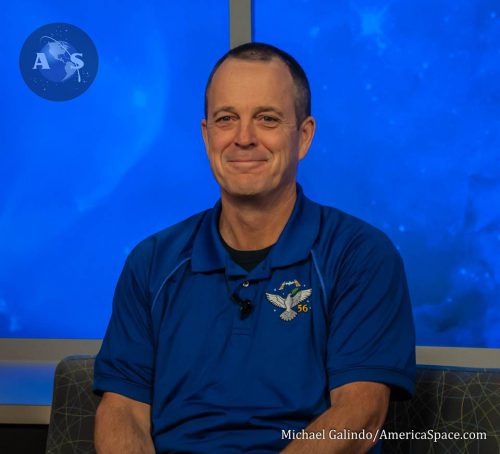
Current planning calls for Soyuz MS-08 to launch from Baikonur on 10 March 2018, whereupon Artemyev, Feustel and Arnold will embark on a well-trodden “fast rendezvous” profile to dock at the station within six hours and four orbits of Earth. Artemyev will guide his spacecraft to a docking at the station’s space-facing (or “zenith”) Poisk module. The three new arrivals will be welcomed aboard by Expedition 55 Commander Anton Shkaplerov and his crewmates Scott Tingle of NASA and Norishige Kanai of Japan. Shkaplerov’s crew are expected to return to Earth aboard Soyuz MS-07 on 19 April, whereupon Feustel will assume command of the ISS. His Expedition 56 increment will transition to its full six-person strength on 25 April, when Soyuz MS-09 arrives, carrying Russian cosmonaut Sergei Prokopiev, U.S. astronaut Jeanette Epps—the first African-American to perform a long-duration space mission—and Germany’s Alexander Gerst.
During their time aboard the station, Feustel, Artemyev and Arnold will participate in over 250 new and ongoing research investigations, as well as supporting the arrival or departure of several unpiloted visiting vehicles. SpaceX is expected to launch three Dragon cargo ships in March, June and August, with Orbital ATK—whose acquisition by Northrop Grumman Corp. was formally approved last month—slated to despatch one Cygnus freighter to the ISS in May. The visiting vehicle manifest for mid-year promises to be a busy one, with the departure of two Russian Progress cargo craft and the arrival of another anticipated between June and August, as well as Japan’s next H-II Transfer Vehicle (HTV).
It also remains to be seen when the inaugural unpiloted flights of Boeing’s Starliner and SpaceX’s Crew Dragon will take place, although both are provisionally targeted to fly next year, paving the road for piloted test flights and regular Commercial Crew Program (CCP) operations as early as spring 2019. In his remarks to AmericaSpace’s Michael Galindo, Feustel noted that “if we were betting on it”, he does not expect to see a Commercial Crew vehicle at the station during his stay. “We’re getting to the point now where things keep getting moved down the road, but they’re getting moved less and less and less each time, so at some time we’re going to hit on the actual date where we’re going to see some of these things launch into space.”
Feustel, Artemyev and Arnold are expected to return to Earth in late August 2018, wrapping up an expedition lasting just a few days shy of six full months. It will bring to a close NASA’s “Year of Education”, which will have seen a full academic year with at least one professional classroom practitioner aboard the ISS. Current Expedition 53 crewman Joe Acaba, a former high school math and science teacher, has been on the station since September 2017 and will remain until February 2018, with fellow math and science educator Ricky Arnold following him from March-August 2018.
Thanks to AmericaSpace’s Michael Galindo for photography and for interviewing the Soyuz MS-08 crew.




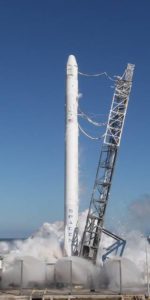
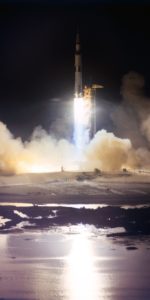
It’s scheduled launch on March 9th, 2018 at 04:22pm CST and landing on August 27th, 2018 after 170 days in space!